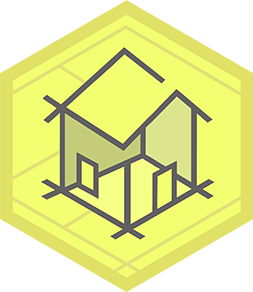Design for the Future
Design and build a cardboard model of a future sustainable house with solar panels, rainwater collection, and green spaces to explore eco-friendly ideas.



Step-by-step guide to Design for the Future
Step 1
Gather all the Materials Needed and set them on a clear table so you can reach everything easily.
Step 2
Draw a simple plan on paper showing where the solar panels rainwater tank and green spaces will go on your house.
Step 3
Cut a rectangle of cardboard to make the base of your house.
Step 4
Measure mark and cut four wall pieces from cardboard that will stand on the base.
Step 5
Measure mark and cut a roof piece from cardboard sized to sit on top of your walls.
Step 6
Glue or tape the four wall pieces upright onto the base to make the house frame.
Step 7
Attach the roof piece to the top of the walls and angle it slightly so rainwater can run toward one side.
Step 8
Cut small rectangles of cardboard to use as solar panels.
Step 9
Cover the cardboard rectangles with aluminium foil and secure the foil with tape so they look shiny like solar panels.
Step 10
Tape the foil-covered solar panels to the tilted side of the roof so they face the sun in your plan.
Step 11
Fold a strip of cardboard into a gutter shape and tape it to the roof edge so water will flow into one spot.
Step 12
Place the small container under the gutter outlet and tape it in place to act as your rainwater tank.
Step 13
Glue scrap green paper leaves or small real leaves and plants onto the base and rooftop to make green spaces and gardens.
Step 14
Decorate the house by drawing windows doors and labels with colouring materials to show where the solar panels gutter and garden are.
Step 15
With adult supervision pour a small amount of water onto the roof to check the gutter directs water into the tank and make any adjustments.
Step 16
Share a photo and a short description of your finished future sustainable house on DIY.org
Final steps
You're almost there! Complete all the steps, bring your creation to life, post it, and conquer the challenge!


Help!?
What can I use instead of aluminium foil for the solar panels if I don't have any?
If you don't have aluminium foil, cover the cardboard rectangles with silver duct tape, metallic craft paper, or reflective sticker sheets and secure them with clear tape so the panels still look shiny.
My cardboard walls keep falling over when I tape them to the base—how do I fix that?
If walls wobble when you glue or tape the four wall pieces upright onto the base, reinforce each inside corner with glued cardboard triangles or use stronger tape (or hot glue with adult help) and press until set to hold the walls steady.
How can I adapt this activity for different age groups?
For younger kids (4–6), have an adult pre-cut the base, walls, roof, and solar panel rectangles for them to glue, tape foil, and stick leaves onto, while older kids (10+) should measure, mark and cut their own pieces, angle the roof deliberately for runoff, and calculate gutter placement before testing with water.
What are some ways to extend or personalize the sustainable house project?
To enhance the model, attach a small hobby solar cell to the foil-covered panels to power an LED inside, add a tiny pump to circulate water from the taped container rainwater tank to rooftop plants, and personalize by painting the walls and planting real succulents in the glued green spaces.
Watch videos on how to Design for the Future
Good Health and Well-Being 🩺🩹 SDG 3 👨👨👧👦 Sustainable Development Goals for Kids
Facts about sustainable architecture and eco-friendly design
☀️ A typical solar panel converts about 15–22% of sunlight into electricity — sunlight is powerful enough that one hour of sunlight hitting Earth could roughly meet global energy needs for a year!
📦 Corrugated cardboard is lightweight but strong because its wavy inner layer acts like lots of tiny beams — perfect for building sturdy scale models.
🌿 Green roofs help cool buildings, reduce stormwater runoff, and create tiny habitats for insects and birds — they’re like a garden on top of your house.
🌧️ One millimeter of rain on 1 square meter of roof equals 1 liter of water — so a 10 m² model roof collects 10 liters from just 1 mm of rain.
🏡 Passive house (Passivhaus) designs can cut a building’s heating energy use by up to about 90% compared with typical construction — great inspiration for future homes.
How do you design and build a cardboard model of a future sustainable house?
What materials do I need to build a cardboard sustainable house model?
What ages is the Design for the Future cardboard house suitable for?
What are the benefits of building a sustainable house model with my child?


One subscription, many ways to play and learn.
Only $6.99 after trial. No credit card required



